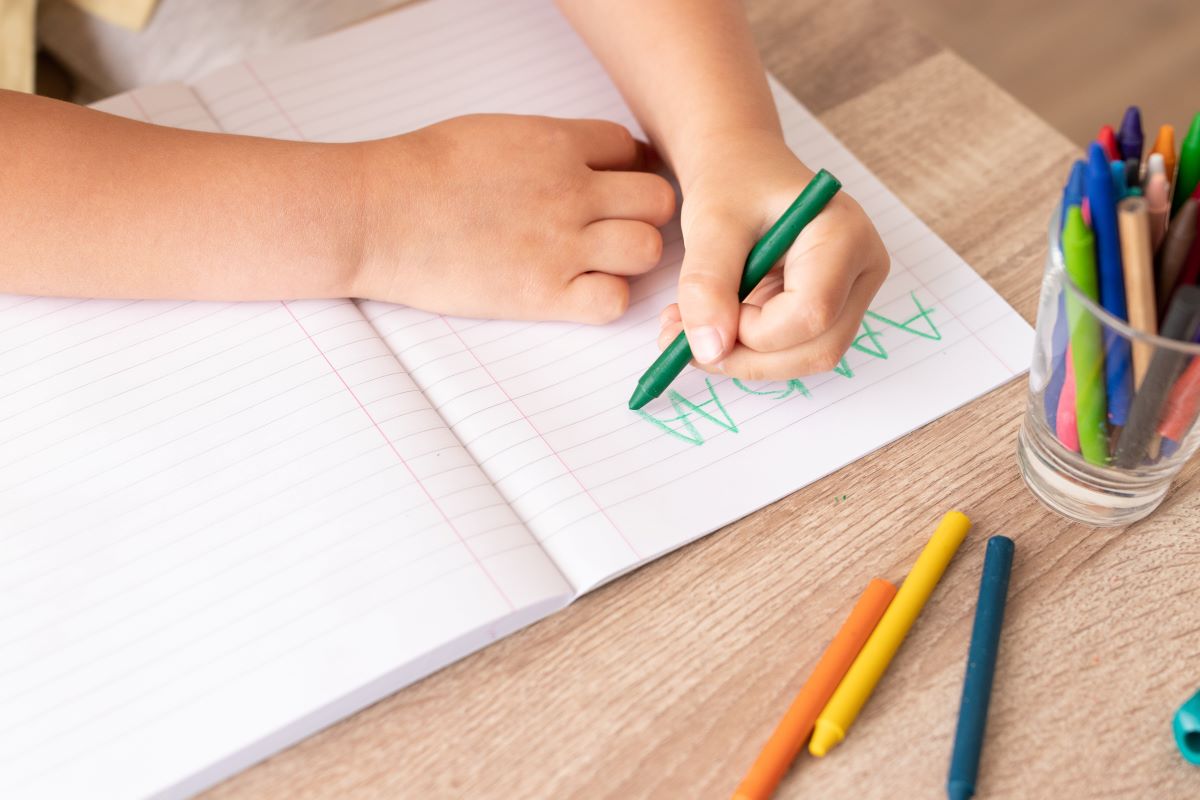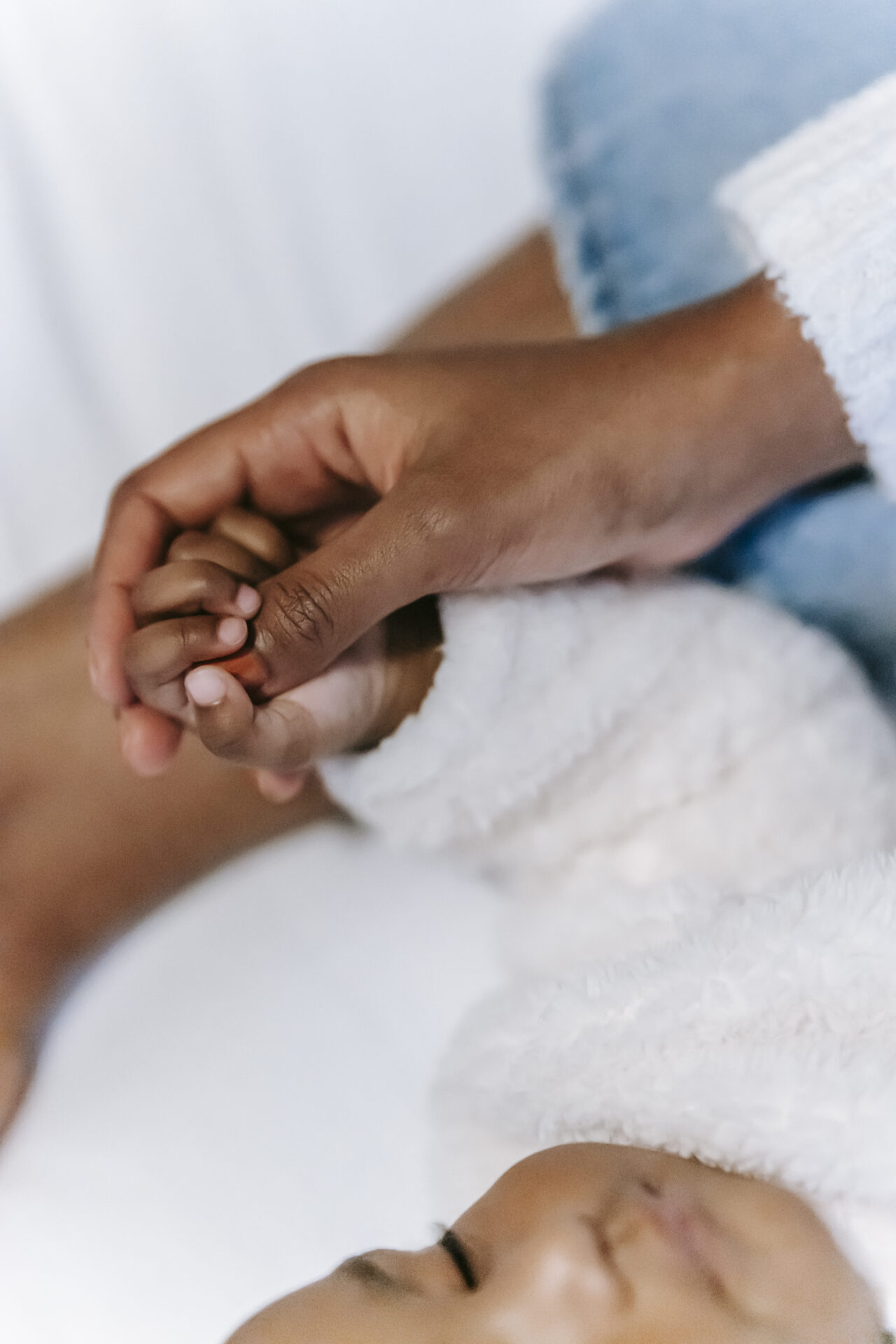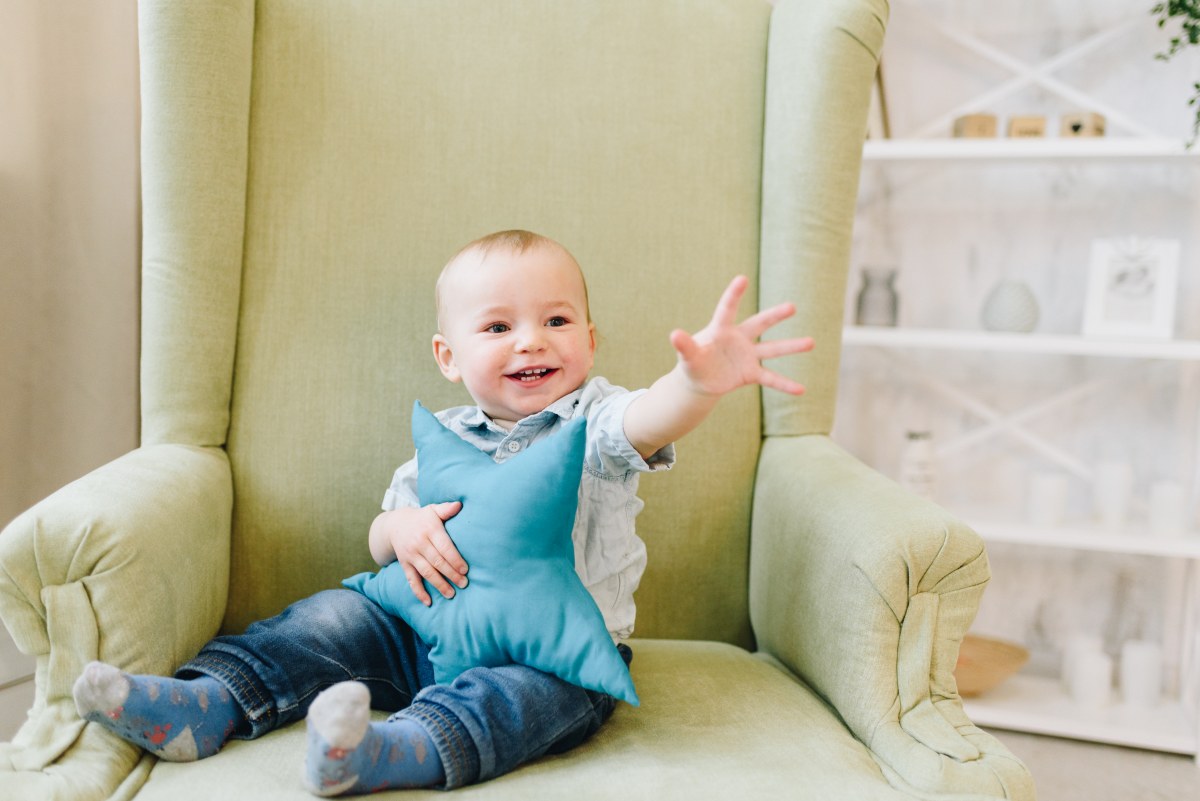In the 36th week, your baby will start to turn in your abdomen. This is how it gets into the birthing position. In this article, you will learn why your baby will move less from now on and how you can best prepare for the birth.
Table of contents
Important facts about the 36th week: What you should know
You are full of anticipation and want to finally hold your baby in your arms, but the little one is still waiting? From now on, it will take about another month until you can finally see your baby.
Contractions should not be encouraged in the 36th week of pregnancy. Your baby will make itself known when it wants to come into the world.
You should use the remaining time until the birth to think about the birth and prepare yourself accordingly. Have you already thought about a name for your baby?
This happens to you
In the 36th week of pregnancy your uterus is at its largest. The upper edge is about the same height as your ribcage. Over the next few weeks, however, it will continue to descend.
You will continue to experiencecontractions, which occur at irregular intervals during the 36th week, as a pulling sensation in your lower abdomen. You may hardly feel any kicks from your baby. Don’t worry, this is completely normal.
Also interesting:
Tip for expectant fathers
Have you already informed your health insurance company about the upcoming birth? If not, you should do it now. Approximately 6 to 8 weeks before the birth, a gynecologist will issue the expected date of birth, which should be submitted to the health insurance company.
Pregnancy symptoms in the 36th week and what you can do about them
High blood pressure
Due to the changed hormone balance, your blood circulation can also get out of control and your blood pressure can skyrocket. Your body has to transport much more blood through your veins, which is why regular blood pressure checks are important.
Slightly elevated blood pressure is generally no reason to worry. However, if your blood pressure is completely out of the norm, it is advisable to talk to your midwife or gynecologist.
Childbirth movements
Your baby is taking up more and more space in your belly and is becoming increasingly active. This means that you may be disturbed by light kicks and knocks throughout the day.
Look on the bright side: your child is active and fit, which is crucial for good health.
Stress
You have a thousand thoughts in your head – from the birth, to the first time as a mother, to deciding what name your child should have. This is completely normal and happens to every pregnant woman.
Especially when it comes to furnishing, there is a lot to do, be it the crib, the color of the wallpaper or the first onesie. Take your partner in the responsibility and look together for the appropriate equipment for your common child.
Premature birth in the 36th week: If your baby does not want to wait any longer
Premature birth is when the baby is born before the 37th week of gestation. If your baby is born in the 36th week of gestation, it is called a late preterm baby.
About 9% of babies are born before 37 weeks gestation. The majority of these are late preterm babies. This is the name given to babies born between the 34th week and the 37th week.
Symptoms of premature birth in the 36th week of gestation
The first signs that may indicate a possible preterm birth are contractions. If these occur at intervals of about 5 to 10 minutes, last longer than half a minute and extend over a period of about 1 hour, we can speak of real labor pains.
If you only notice a short pulling sensation in your abdomen, these may be normal contractions of your uterus
. The contractions may also be accompanied by back pain or pulling in the thigh.In some cases, bleeding or prematurerupture of the water (premature rupture of the membranes) can signal a premature birth.
If you notice these symptoms, you should immediately go to the nearest hospital or call an ambulance.
What are the reasons for a premature birth in the 36th week of pregnancy?
In about 40% of cases, the causes of premature birth are actually unknown. This concerns almost half of all premature births.
In principle, however, premature births can be triggered by various causes. These causes can occur individually or in combination with each other.
Possible causes of premature birth:
- General illness on your part
- Disorders of the uterus(cervix) or placenta
- Infections in the genital tract
- Pregnancy-related diseases
- Multiple pregnancy
- Premature rupture of the membranes
- Malformations or chromosomal disorders in the baby
If you have already had one or more premature births in the past, the risk of another premature birth is unfortunately increased.
In addition, the consumption of nicotine or alcohol during pregnancy also leads to an increased risk of premature birth.
The consequences of a premature birth for your baby
It is often assumed that so-called late preterm babies born between the 34th week of gestation and the 37th week are largely developed and therefore “out of the woods”. Unfortunately, the reality is different.
Premature babies born between the 34th week of gestation and the 36th week of gestation have on average a sevenfold higher risk of disease than newborns born between the 37th week of gestation and the 40th week of gestation.
The little ones are particularly susceptible to lung problems. The severity of respiratory disease is also significantly more pronounced in late preterm than in mature babies.
About 38% of premature babies require additional ventilation.In contrast, this affects about 12% of babies born later.
Can premature birth be prevented?
The risk of secondary diseases after birth are as the pregnancy progresses. But can premature birth actually be prevented? If so, how?
Premature birth can indeed be prevented. It is enormously important that you are well informed about your physical changes during pregnancy
In this way, you can notice unusual changes in your body at an early stage and contact a doctor. For example, infections in the genital area can be treated at an early stage.
In addition, you should not put yourself under excessive strain during pregnancy. This also means that you should inform your employer in good time about an existing pregnancy.
Only then can the maternity protection guidelines take effect. These stipulate, for example, that pregnant women may no longer lift heavy objects or work with toxic substances. According to the Maternity Protection Act, pregnant women are no longer allowed to work after the 36th week and are subject to special protection against dismissal from the first day of pregnancy.
What happens with the baby
In the 36th week of pregnancy, your baby is about 46 to 48 cm tall and weighs about 2.7 kg.
This is how your baby develops in the 36th week of gestation
The baby should be in the birthing position from about the 36th week. This means that it turns around and slides with its head into your pelvis. The forehead is very pronounced due to the growth of the brain in the past weeks.
The protective cheese layer and the lanugo hair of your baby will gradually disappear. From the 36th week of gestation until the birth there are still about 4 weeks. During this time, you will gain about 200 g of weight per week.
But even now your baby would be well equipped for life outside the womb: Although still somewhat light-weight, it is perfectly viable even without medical care.
Your baby is gradually ready for birth and is already being prepared for the feeling of labor by the Braxton-Hicks contractions.
Your baby will become increasingly sluggish in your belly – but this is normal. Nevertheless, make sure that you feel your baby at least a few times a day.
Did you know? You can help to wake the baby with the help of light or gentle nudges to the belly.
This is important now
What you should know about your baby’s position
One issue that concerns many expectant moms at this time is whether the baby is lying correctly. The preferred position at birth is the cranial position.
In this position, your baby has the best conditions to pass well through your birth canal. However, babies can also be born vaginally in the breech or final pelvic position.
Your doctor will still advise you about the possibility of an external turn, as birth from the breech position can lead to risks.
The legs and buttocks usually pass well through the birth canal. The head, which has the largest diameter, comes at the end. If it unfortunately gets stuck, action must be taken quickly. Otherwise there is a risk of oxygen star vation.
A spontaneous birth from the transverse position, on the other hand, is not possible. In this case, your baby will have to be delivered by cesarean section. However, this case is extremely rare.
The transverse position is especially common in multiple pregnancies, because your abdominal wall is already overstretched and offers the baby less stability.
Up to the 36th week of pregnancy, about 3% are still in this position. At the time of birth in the 40th week of pregnancy, only 0.3% are still in this position. The probability of rotation is therefore very high.
In most cases, it is possible to wait until the birth. In this case, the doctors will prepare for a cesarean section as a precaution if your baby does not turn.
This is how you can prepare for the birth in the 36th week of pregnancy
Preparation is essential – even during pregnancy. As you already know, your baby can be born in the 36th week of pregnancy.
So that you are best prepared in this case, we have summarized for you how you can best prepare for the birth.
Choosing the right place
Birth center, home birth or rather the classic clinic? Basically, it doesn’t matter much where you want to give birth to your baby.
The only important thing is that it receives the best possible medical care
Our tip: You should already start thinking about the place of birth. It is also helpful if you look at the places and listen to your gut feeling.
Who would I like to have with me at the birth?
Most moms-to-be want to have someone by their side during the birth. It is important that the person radiates security – even if it is stressful.
This can be your own mother, your sister or, of course, your partner. People who cannot see blood or who quickly become nervous and hectic should rather not be present at the birth.
If no one in your family comes into question, a doula is also an option. She will accompany you professionally during the birth and can be an important support.
How should the birth proceed?
A birth is always very individual and can therefore hardly be planned. However, you can already start thinking about the birth position in which you would like to bring your baby into the world.
In a sitting position, in a quadruped position or by water birth? Ask your midwife for more information.
How can I prepare my body for the birth?
It has been proven that women who exercise regularly during pregnancy are better able to cope with labor and the entire birth process.
Nutrition during pregnancy is also super important for being fit for birth. Plenty of fruits and vegetables, unsaturated fatty acids and fiber ensure that your body survives this exciting state well.
Some expectant moms suffer from iron deficiency during pregnancy – this can be compensated by special preparations.
In addition, regular massages of the perineum – for example with almond oil – ensure that the area is supple and more elastic. In some cases, this can even prevent perineal tears.
Midwife tip
In the 36th week of pregnancy, your baby usually turns in your belly. If this has not happened yet, I have a tip for you: lie on your back, support yourself with your shoulders and lift your bottom off the floor. Also the osteopath can help to get the baby to turn.
FAQ
In the 36th week of gestation, your baby is fully developed. If it were born now, it would be called a late preterm baby.
Your doctor can tell you the position of your baby in the 36th week by ultrasound. However, your baby should be in the birth position in the 36th week.
In the 36th week, your baby is about 46 to 48 cm tall and weighs about 2.7 kg.
If you feel a contraction, you should be taken to hospital immediately. Basically, it can happen at any moment.
A caesarean section is not yet absolutely necessary in the 36th week of pregnancy. There is still enough time for the baby to turn on its own. If you are worried, ask your midwife or gynaecologist for help.
Sinking pains are very individual and are experienced very differently by pregnant women, which is why it is not possible to make a general statement about what sinking pains feel like. A pulling sensation in the back or a feeling of tension is often a sign of contractions, but a sharp pain can also be an accompanying symptom.
Durchfall wird häufig durch Reizungen des Darms ausgelöst. Da die Gebärmuttermuskulatur Kontraktionen ausführt, kann der Darm irritiert werden, weshalb es zu Durchfall kommen kann. Sollte der Durchfall nur vereinzelt auftreten, brauchst Du Dir keine Sorgen machen.
Videos about the 36th WOP
Nekole and Ashley take you through their 36th week of pregnancy and talk about their labour and birth preparations.









